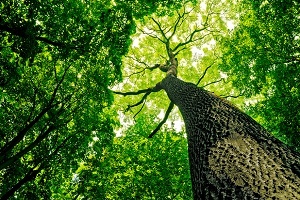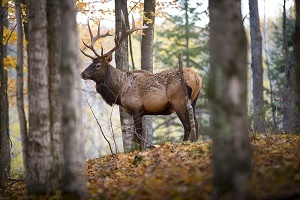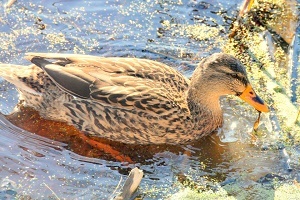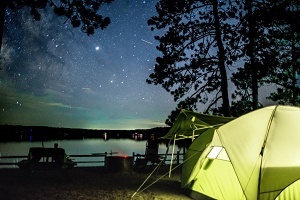|
Some of the items in this week's news digest reflect the impact of COVID-19 and how the Michigan Department of Natural Resources is adapting to meet customers' needs. Public health and safety are our biggest priorities, and we will continue to share news and information about the safest, and sometimes new, ways to connect with our state's amazing natural and cultural resources in this uncertain time.
Follow our DNR COVID-19 response page for FAQs and updates on facilities and closures/cancellations, and stay up to date on the latest public health guidelines and news at Michigan.gov/Coronavirus and CDC.gov/Coronavirus.
Here's a look at some of this week's stories from the DNR:
See other news releases, Showcasing the DNR stories, photos and other resources at Michigan.gov/DNRPressRoom.
PHOTO FOLDER: Larger, higher-res versions of the images used in this news digest are available in this folder.

A sure sign of spring is nearly here: morels! As sunshine and April rains wake up the forests, the annual search for the elusive mushrooms is a great way to enjoy the outdoors. You can find them from late April to early June, and – according to Michigan State University Extension – they’re believed to grow in every Michigan county.
Most Michiganders will tell you that the location of a good morel patch is a matter of utmost secrecy. This makes mushroom hunting a perfect chance to practice the 6-foot-minimum social distancing that is such a critical step in slowing the spread of the coronavirus. Mushroom hunters should plan to search locally, too, and only with people who live in their household.
To find morels, target hilly areas with plenty of hardwood trees like maple, beech and oak, checking for burn scars where a wildfire or prescribed burn has occurred. Pick a warm day after a rain to start your hunt, when mushrooms are most likely to have bloomed. When heading to the woods, take a mesh bag for carrying your prizes, a knife (always cut, never pull morels) and a map of your hunting area.
Learn how to find morels, tell a false one from a real one, prepare them, and boost your odds of success – with a map showing sites of last year’s wildfires and prescribed burns – at Michigan.gov/MiMorels.
|

Love hiking in the forest, drizzling maple syrup on pancakes or taking photos of flowering trees in spring? Then we think you’ll appreciate learning about the work the DNR Forest Health team does to keep Michigan’s trees green and thriving. The just-released 2019 Michigan Forest Health Highlights report tracks efforts to battle insects and diseases harming our state’s trees and shares information about the threats the team is following.
“Our goal is to prevent the introduction and spread of organisms that harm Michigan’s forests,” said DNR forest health manager Sue Tangora. “The Forest Health Highlights report collects our findings, efforts and research from universities.”
The report is sent each year to the U.S. Forest Service, along with data from other states to provide a national look at forest health. Michigan articles are contributed by the DNR, other state agencies and university partners including Michigan State University and Michigan Technological University.
This year’s report highlights the battle against the hemlock woolly adelgid, a tiny, aphid-like insect that sucks the sap out of hemlock trees, and oak wilt, a disease that threatens previously healthy stands of this hardy, majestic tree species, plus the training and collaboration helping to fight these threats. Other topics include watch list species (those posing an immediate or potential threat to Michigan's economy, environment or human health), scientific research, status of native and invasive pests and ways to report suspected invasive species.
Questions? Visit Michigan.gov/ForestHealth or contact James Wieferich at 517-284-5866.
|

The Michigan Natural Resources Commission’s next regular meeting is Thursday, April 16. Due to COVID-19 public health and safety guidelines, the meeting will be hosted only in an online and conference-call format.
Watch the meeting live online using this link or join just the conference call at 351-999-4191. Anyone interested in providing public comment should send an email to NRC@Michigan.gov or call 517-284-5808 if they don't have email/internet access.
The meeting starts at 9 a.m. with Committee of the Whole, with an agenda that includes:
- An update on lake trout and splake fishing regulations.
- Small game and upland game bird hunting regulations.
- Furbearer and elk regulations.
- A proposal to list marbled crayfish as a prohibited species.
- The bovine tuberculosis surveillance report.
- Several land transactions.
See the full draft meeting agenda at Michigan.gov/NRC. For the latest on other public meetings, visit the DNR's boards, commissions and committees webpage.
|

Duck nests, particularly mallard nests, seem to pop up everywhere in the spring. Female mallards often build them in landscaping, gardens or other locations that people may find inappropriate, or at least inconvenient. If you spot one, it’s best to leave the nest alone and keep pets away from it, too. The hen will lead her young to water soon after they hatch.
Canada geese, which sometimes build nests near houses or in parks, also will quickly shepherd their chicks to water. Adult geese are very protective and may hiss and run or fly toward perceived intruders. Try to avoid nesting areas, but if that’s not possible, carry an umbrella and gently scare the bird away by opening and closing it.
On the rare occasion that you come across an animal that is injured or truly abandoned, please keep in mind that, in Michigan, it’s illegal to keep the animal unless you’re a licensed wildlife rehabilitator. Under the current Stay Home Stay Safe Executive Order, some wildlife rehabilitators may have had to suspend services; call ahead to see whether they are able to assist at this time.
Everyone can play a part in successfully sharing space with wildlife in our communities. Get additional tips and information on handling conflicts with wildlife and what to do if you find a baby animal at Michigan.gov/Wildlife.
Questions? Contact DNR Wildlife Division at 517-284-9453.
|

To help further slow the spread of COVID-19, the DNR has extended campground closures at state parks and recreation areas and state forest campgrounds through mid-May. Day-use areas in state parks and recreation areas, state-managed trails and boating access sites currently are open to provide local opportunities to get outdoors; however, many park amenities have been closed and services have been reduced.
Reservations for dates through the night of May 14 are adjusted as follows:
- Camping and state harbor reservations through May 14 are automatically canceled. Reservation holders will receive full refunds, including their normally nonrefundable reservation fee.
- If a reservation extends past May 14, arrival dates will be adjusted to May 15 and reservation holders will receive a refund for canceled nights.
- Reservation holders will receive email notifications once cancellations are processed. Refunds will be applied to the original payment method.
“We want to accommodate our valued camping customers and make these difficult circumstances as fair and easy as possible,” said Ron Olson, chief of the DNR Parks and Recreation Division.
For full details and FAQs, customers can visit Michigan.gov/Camping or e-mail DNR-Reservations@Michigan.gov.
Questions? Contact Jason Fleming at 517-930-6726 or Christa Sturtevant-Good at 231-861-2703.
|
|